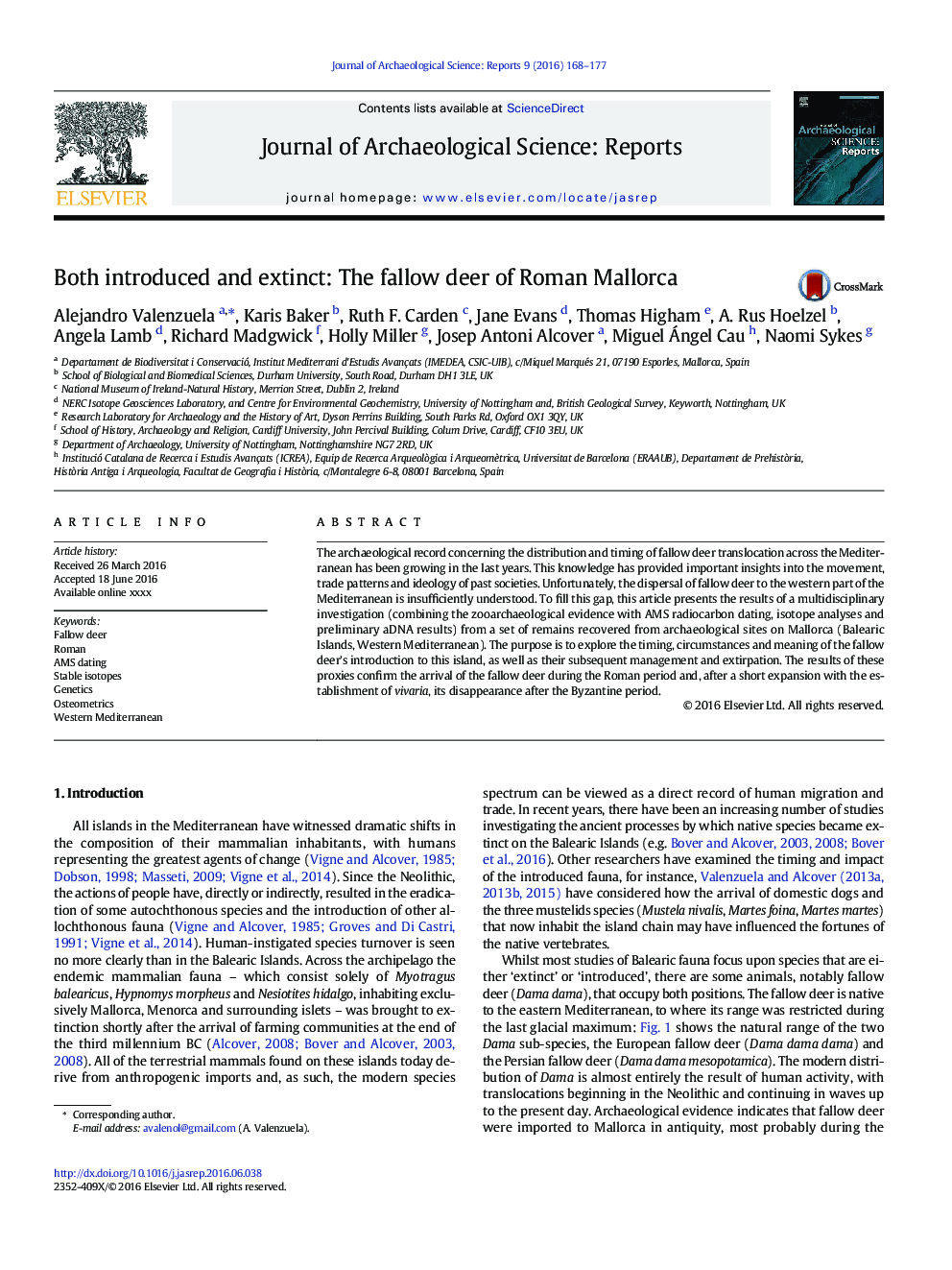| Article ID | Journal | Published Year | Pages | File Type |
|---|---|---|---|---|
| 7445341 | Journal of Archaeological Science: Reports | 2016 | 10 Pages |
Abstract
The archaeological record concerning the distribution and timing of fallow deer translocation across the Mediterranean has been growing in the last years. This knowledge has provided important insights into the movement, trade patterns and ideology of past societies. Unfortunately, the dispersal of fallow deer to the western part of the Mediterranean is insufficiently understood. To fill this gap, this article presents the results of a multidisciplinary investigation (combining the zooarchaeological evidence with AMS radiocarbon dating, isotope analyses and preliminary aDNA results) from a set of remains recovered from archaeological sites on Mallorca (Balearic Islands, Western Mediterranean). The purpose is to explore the timing, circumstances and meaning of the fallow deer's introduction to this island, as well as their subsequent management and extirpation. The results of these proxies confirm the arrival of the fallow deer during the Roman period and, after a short expansion with the establishment of vivaria, its disappearance after the Byzantine period.
Related Topics
Social Sciences and Humanities
Arts and Humanities
History
Authors
Alejandro Valenzuela, Karis Baker, Ruth F. Carden, Jane Evans, Thomas Higham, A. Rus Hoelzel, Angela Lamb, Richard Madgwick, Holly Miller, Josep Antoni Alcover, Miguel Ángel Cau, Naomi Sykes,
